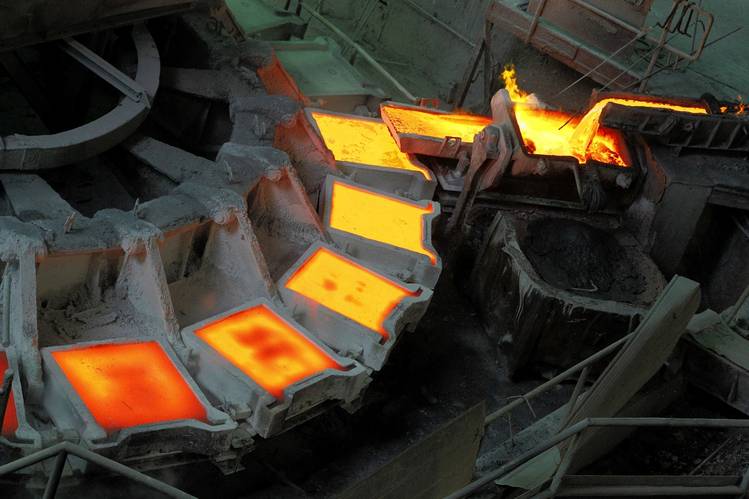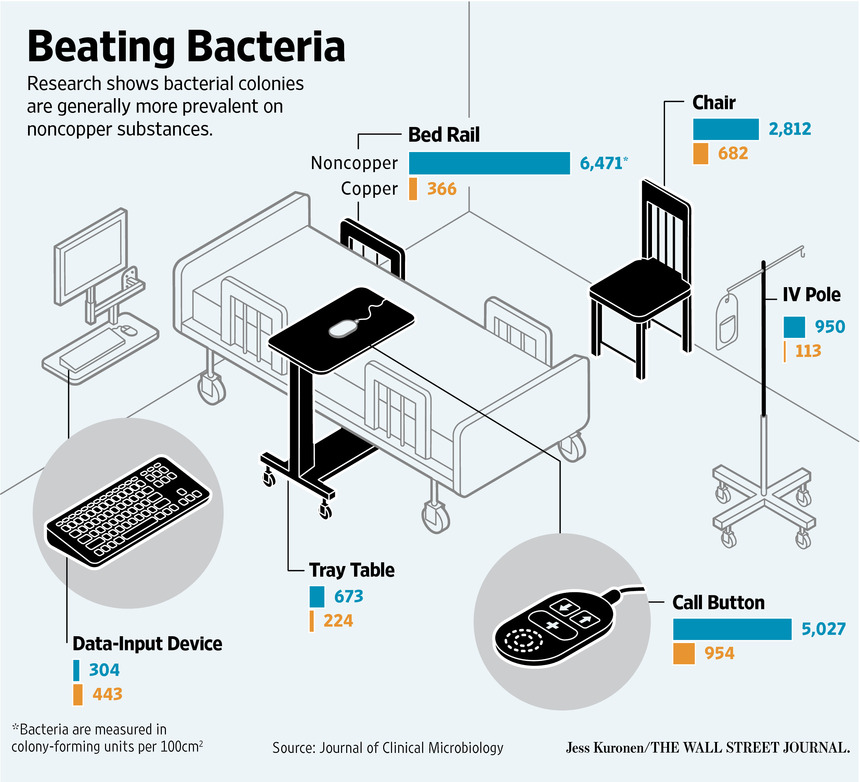Copper is used in everything from automobiles to air conditioners, but it has one property that makes it especially attractive for medical uses:
It kills bacteria
A burgeoning opportunity for copper producers relies on a simple premise: that the base metal is good for your health.
Copper is used in everything from construction to electrical wiring, but it also has antimicrobial properties that kill 99.9% of bacteria on its surface within two hours, according to the Environmental Protection Agency. That makes it a potential weapon for combating the spread of infections in hospitals and public areas.
More than 150 health-care and other facilities have installed antimicrobial copper alloy surfaces manufactured in the U.S. since 2011, according to the Copper Development Association. Products range from copper carts and sinks to door knobs.
Some in the industry are hoping that these products will provide a new avenue of growth as other major sources of demand have slowed, even though copper’s health-care uses are relatively expensive and some health-care professionals question its ability to reduce infection.
Copper prices have fallen by more than half since they peaked above $4.60 a pound in 2011, as growth in China, the world’s largest consumer, has slowed. Prices have recovered 3% this year as concerns over China’s economy have eased.
The drop in copper prices in recent years is one factor leading more health-care professionals to consider using the metal. High prices have been a deterrent; installing copper instead of plastic or stainless steel can increase costs as much as 50% according to the CDA.
The adoption of copper alloys in hospitals is unlikely to make much of a splash in the 20-million-ton copper market, since the installations use copper on a smaller scale than general industrial uses.
But antimicrobial copper is gradually making its way into a variety of applications outside of health-care, too, such as public transportation, training facilities, private households and airports.
 “Day cares, shopping malls, cruise ships should be made completely out of copper,” said Todd Linden, president of the Grinnell Regional Medical Center in Grinnell, Iowa, which has installed copper surfaces.
“Day cares, shopping malls, cruise ships should be made completely out of copper,” said Todd Linden, president of the Grinnell Regional Medical Center in Grinnell, Iowa, which has installed copper surfaces.
Copper kills bacteria by draining electrons, which provide energy, and by pumping copper ions into the cell. This destroys the cell membrane, DNA and proteins, causing the cell to die. On stainless steel, which is more commonly used in health-care applications, bacteria can survive for weeks.
The metal’s antimicrobial properties have been documented as far back as 2600 B.C., when it was used in sterilizing wounds and drinking water. But the market for copper use in health-care facilities got a big boost after 2008, when the EPA allowed manufacturers to market registered copper products with public-health claims.
Producers said the EPA approval could substantially increase the metal’s use in hospitals, especially as more-recent studies on copper’s efficacy have caught the attention of an increasing number of hospital executives.
Read Full Article – Source: Paging Doctor Copper: Metal Wins Fans in Health Care – WSJ
Author – STEPHANIE YANG
Photo 2 Credit – RODRIGO GARRIDO/REUTERS
